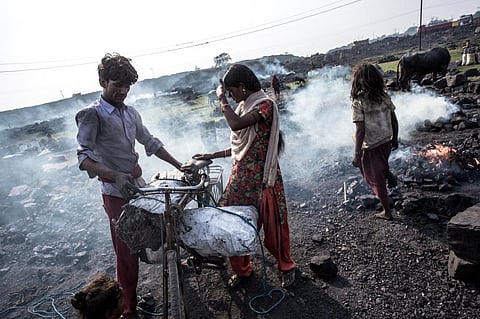Air pollution slows economic growth, harms poor most: Report
Air pollution is the leading global environmental determinant of health, with millions of attributable deaths each year. It increases the risk of a wide range of cardiovascular and respiratory diseases.
Air pollution impacts the low-income population groups disproportionately, although exposure to fine particulate matter (PM 2.5) is equally distributed and very harmful for health.
Previous studies demonstrated the association of mortality and morbidity with air pollution in high-income countries. It, however, is not convertible to low-income countries due the kind of occupations and quality healthcare services.
A recent World Bank report Air Pollution and Poverty: PM 2.5 Exposure in 211 Countries and Territories suggested how air pollution kills especially the poor who are more exposed and vulnerable.
It explored the comprehensive relationship between outdoor air pollution exposure, economic development and poverty in these places. It presents global exposure estimates for the World Health Organization’s 2021 revised PM 2.5 standards.
Additionally, this study estimated the number of poor people exposed to toxic levels of PM 2.5.
Around 7.3 billion people globally (94 per cent of world population) are facing air pollution levels considered unsafe (annual average PM 2.5 concentration over 5 microgram per cubic metre) by WHO.
As many as 2.8 billion people are exposed to hazardous pollution levels (PM 2.5 concentration over 35 μg/m3), which implies a mortality rate that is more than 24 per cent higher than in safe areas.
Around 36 per cent of the people exposed to unsafe PM 2.5 levels live in India or China, the report noted. About 760 million people living in extreme poverty (living on less than $1.90 per day) are directly exposed to unsafe PM 2.5 concentrations. Of them, 405 million are in sub-Saharan Africa.
Another 275 million people living in extreme poverty around the globe are exposed to hazardous PM 2.5 levels, the report added.
An estimated 65 and 29.7 per cent inhabitants in low- and middle-income countries (LMIC) and upper middle-income countries were exposed to hazardous levels of PM 2.5.
The share in low-income countries and high-income countries are 4.4 and 0.9 per cent respectively.
The pattern holds regardless of which concentration threshold is considered.
Overall, a tenth of all the people in extreme poverty are exposed to unsafe levels of air pollution, and are more vulnerable to its impacts on their lifestyle.
For the extreme poor, the same air pollution level likely means increased severe health risks compared to those with higher income.
The study confirmed that the intensity of air pollution reduces economic growth of the country. Additionally, air pollution measurement is needed to address the exposure of poor people and adequate healthcare services can help reduce mortality in LMICs.
Planning environmental and health outwardness can help to steer pollution sources such as industrial zones away from low-income communities.
Finally, removing incentives that propagate the over-consumption of polluting fuels can yield a double dividend for the poor. Fossil fuel subsidies, for instance, can benefit richer households, but the air pollution externalities associated with subsidised fossil fuel consumption are also a burden that can be borne disproportionately by poorer households.
Focus on these policy biases can be pro-poor both in terms of fiscal and health benefits.

